
As a trusted, professional roofing contractor, your clients depend on you to advise and direct them. Every bit as important as the quality of your workmanship, your thoughtful direction will make or break your relationship with these professionals.
You may already know the primary problems they may face with their flat roof system. It is your responsibility to impart that knowledge in a clear, concise, and understandable fashion to your current or potential customer. What is the best way to do that? You can share the information on your company social media (think Facebook, LinkedIn, etc.). You can share expertise via your website blog. You can have a flyer made to provide various details. There are many options. What is not an option is failing to support your commercial clients with the information they desperately need to make good financial decisions.
In case you are newer to flat roof systems or are looking for more information about their potential issues, we are sharing the top 5 reasons ponding water on a roof is a problem.
Why is Ponding Water a Concern?
The very nature of a flat or low-slope roof causes ponding water problems. Without a significant slope to remove it from the roof, the water will pond in low areas. Why is this a problem? There are several reasons to consider.
Gravity. If moisture has nowhere else to go, gravity will cause it to seek any tiny imperfection in the roofing system to move downward. This leads directly to leak development and resulting structural damage.
Vegetation. Stagnant water is a petrie dish for the development of mold, mildew and other forms of vegetation. Many of these use a root system, which can penetrate the roofing system and cause the very defects that lead to the development of leaks. Additionally, some of this vegetation is extremely unhealthy for the people the roofing system is designed to protect.
Pests. Standing water provides the opportunity for pests to gather. Not only is it a breeding ground for mosquitoes, it provides a gathering location for birds, rodents and other pests to find their necessary water.
Weight. Depending on the size of the ponding area, it could be adding unanticipated weight to the roofing structure. A single gallon of water weighs 8.34 pounds. You can quickly see how large areas of ponding can add substantial weight to specific structural locations. Those locations may not be sufficiently reinforced to support that weight.
Collapse. Over time, left unchecked that ponding water will lead to system failure and will eventually get into the structure. The structure will weaken and collapse. No roofing system or substructure can withstand the damage of unchecked water year after year.
How to Address Ponding Water Issues
There is no point in identifying a problem if you aren’t willing to offer some solutions. Here are a few ways to identify and address water ponding.
Inspections. Scheduled inspections help identify the existence of a ponding water issue. Simply put, you can’t fix what you don’t know is broken. The NRCA states water found standing on flat roofs for longer than 2 full days after a storm should be examined by a professional commercial roofing contractor.
Maintenance. Appropriate maintenance of the flat roof system is paramount. This is how those small defects that may exist are corrected, reducing the risk of system compromise from the accumulated water.
Repairs. Any repair should be made promptly and correctly. Though it doesn’t stop the water from ponding, it does reduce the likelihood of more extensive damage from occurring.
Restoration. The application of a coating, spray foam or single-ply membrane improves the waterproofing of the system and helps seal any existing defects. If the ponding is due to collapsed insulation or other “low spot” in the roofing structure, it can also help fill in the area for a more even roof.
Gutters. Gutters need to be cleaned and inspected at least twice a year. Debris build-up is another common reason water can begin to pond on a system. This is such an easy fix. There is no excuse for it ever occurring.
Drains. The installation of drains may become necessary. Experts recommend a drain every 80 feet to allow for proper and efficient water removal.
Replacement. If the problem is extensive or caused by issues like collapsing insulation, weakened structure or even a foundational issue, the only answer to the problem may be a full tear off and replacement to address the deficiencies.
Remember, more than just an eyesore, ponding water is truly a hazardous condition to any flat roof system. Left unchecked, it will ultimately lead to system failure and the risk of a catastrophic loss to your client. Do them a favor, and make sure they know the risks. They will appreciate it.



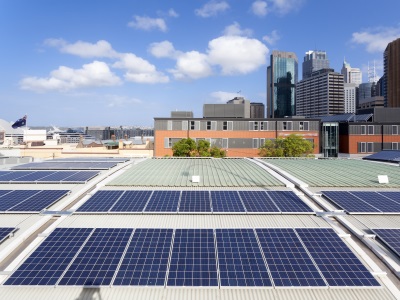

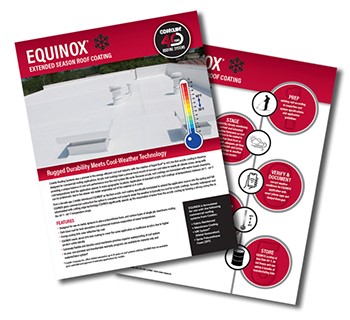 This single modification has extended the sales window for countless commercial roofers across the United States. The change has been so significant that Conklin reports between September and December 2020, sales “nearly doubled the best annual sales volume Equinox® had ever achieved in the previous 11 years in the Conklin product lineup”, according to an earlier article in Vision Magazine.
This single modification has extended the sales window for countless commercial roofers across the United States. The change has been so significant that Conklin reports between September and December 2020, sales “nearly doubled the best annual sales volume Equinox® had ever achieved in the previous 11 years in the Conklin product lineup”, according to an earlier article in Vision Magazine.


 If you are a commercial building owner or property manager facing a roofing situation, these are words you know well. When you have a roofing problem, you don’t really want to hear 6-8 weeks or longer. So, why is that what you hear from every contractor you call these days? It is very simple, it is called material shortage or, for those who prefer fancier terms, a disruption in the supply chain.
If you are a commercial building owner or property manager facing a roofing situation, these are words you know well. When you have a roofing problem, you don’t really want to hear 6-8 weeks or longer. So, why is that what you hear from every contractor you call these days? It is very simple, it is called material shortage or, for those who prefer fancier terms, a disruption in the supply chain.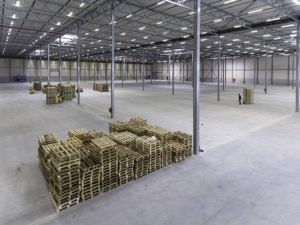


 Commercial roofing contractors are frequently too busy to sit and watch a webinar or video, regardless of how important the information may be. You’re driving to project sites, meeting with clients and multi-tasking throughout the day.
Commercial roofing contractors are frequently too busy to sit and watch a webinar or video, regardless of how important the information may be. You’re driving to project sites, meeting with clients and multi-tasking throughout the day.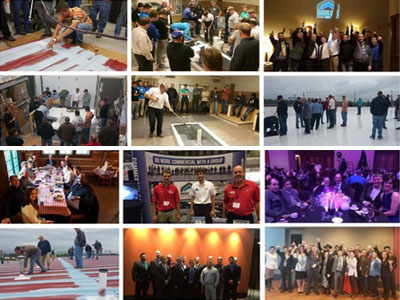
 Choice Roof Contractor Group was established as a nationwide brand to help commercial roofing contractors work together while concurrently providing better service to building owners. This idea has made an incredible impact on the industry. To learn more about our initial challenges and achievements to get to this point, visit the following blog:
Choice Roof Contractor Group was established as a nationwide brand to help commercial roofing contractors work together while concurrently providing better service to building owners. This idea has made an incredible impact on the industry. To learn more about our initial challenges and achievements to get to this point, visit the following blog: 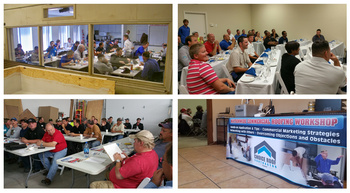 The commercial roofing industry has been the beneficiary of innumerable technological advances over the last decade. Improvements in materials, installation techniques, safety and other areas have made us more efficient and cost effective.
The commercial roofing industry has been the beneficiary of innumerable technological advances over the last decade. Improvements in materials, installation techniques, safety and other areas have made us more efficient and cost effective. As exciting as the past 7 years has been, we are doubly enthusiastic about what the future holds for all of us. Though our industry has faced challenge and adversity over the past 12 months, the Choice Roof Contractor Group remains steadfast in its efforts to provide you and your company with all the information it needs to be successful and profitable over the next 7 years and beyond.
As exciting as the past 7 years has been, we are doubly enthusiastic about what the future holds for all of us. Though our industry has faced challenge and adversity over the past 12 months, the Choice Roof Contractor Group remains steadfast in its efforts to provide you and your company with all the information it needs to be successful and profitable over the next 7 years and beyond.